Modern architecture is the school of design that prevailed since the turn of the 20th century till World War II. The horrendous war altered the kind of buildings needed in the post-war era. People needed practicality and functionality more than ever to rebuild—from scratch—the entire cities that were demolished at the time. The dominant Beaux-Arts and neoclassical architecture, back then, had to subside to make way for a new architectural style that can meet the public needs. This is how Modern architecture arose.
Modern Architecture depended on utilizing novel construction techniques and materials like reinforced concrete, steel, and glass. This architectural style was very “in”, especially for government buildings and universities, until the 1980s where it started to face strong competition from other new schools like postmodernism and neomodernism.
Today, we bring you a broad selection of some of the most famous buildings created under the umbrella of Modern architecture:
1) The Fallingwater House (Frank Lloyd Wright, Mill Run, Pennsylvania, USA, 1935)
The design of the iconic house was inspired by Japanese architecture which is famous for using cantilevers. The house, that was ideally incorporated into the natural landscape, was created as a weekend getaway for the Kaufmann family.
The house’s condition started to deteriorate quickly after construction that Mr. Kaufman called it the ‘seven-buckets building’, referring to the leaky roof. Moreover, the cantilevered terraces started to fall off due to the lack of proper reinforcement. The house underwent revamp several times and was converted into a museum in 2002.
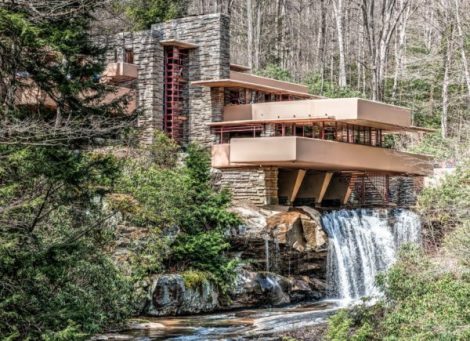
2) Glass House (Philip Johnson, New Canaan, Connecticut, USA, 1949)
Philip Johnson built that house to be his own. His design was minimal and utilized the reflection/transparency features of glass. He also experimented with dimensions and geometric shapes which made the house one of the landmarks of the area and an icon in the world of Modern architecture.
The weekend home was made mainly of glass and steel. However, it also suffered from the ‘leaky roof’ issue like the Fallingwater house, which made Johnson describe it, jokingly, as the ’four-bucket house’.
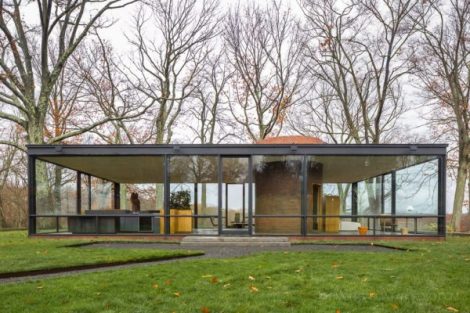
3) Villa Savoye (Le Corbusier, Paris, France, 1931)
The house was built as a family retreat for the Savoyes, in Poissy, on the outskirts of Paris. Its distinct design manifested the ‘five points’ that Le Corbusier endorsed which included the open plan, the grid of reinforced concrete columns, the horizontal windows, the roof garden, and the independent façade.
The family suffered greatly from problems that arose after they started using it. Faulty construction and design mishaps caused the family to abandon it a few years later. It has miraculously made it to the list of ’Public Buildings’ and has been turned into a museum.
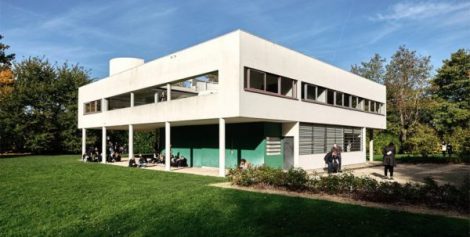
4) The Guggenheim Museum (Frank Lloyd Wright, New York, USA, 1959)
The great architect marketed the concept of organic architecture which envisioned humanity being intimately linked to the environment.
The cone-shaped museum comprises many key galleries and art collections. The spirally-designed interior takes you on an endless journey dissolving all obstacles between spaces. The rigid geometric shapes that were dominant in Modern architecture were described by Wright, who says: “these geometric forms suggest certain human ideas, moods, sentiments – as for instance: the circle, infinity; the triangle, structural unity; the spiral, organic progress; the square, integrity.” Wright saw the Guggenheim as a ‘temple of the spirit’.
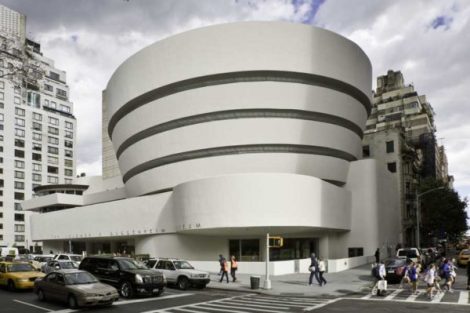
5) Barcelona Pavilion (Ludwig Mies Van der Rohe, Barcelona, Spain, 1929)
The pavilion was originally introduced as the German Pavilion for the 1929 International Exposition in Barcelona, hosting the German wing of the exhibition. The design, which was influenced by the Bauhaus movement, features transparent walls and a cantilevered roof. Although the pavilion was quite minimal, the architect did his best to use luxurious materials like red onyx, marble, and Travertine. One of the lavish pieces of furniture, specially created for the building, was the legendary ‘Barcelona Chair’.
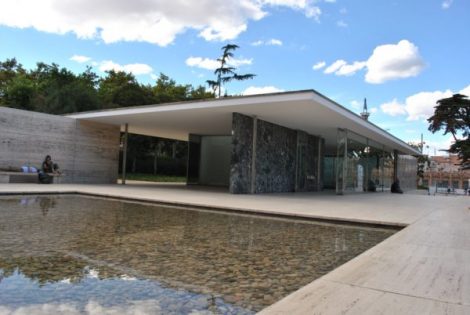
6) David S. Ingalls Skating Rink in New Haven (Eero Saarinen, Connecticut, USA)
The building is also known as ‘Yale Whale’, referring to Yale University, from which Eero Saarinen has graduated. The creative design holds the distinct architectural signature of Saarinen, who often used catenary arches. The hockey arena has an undulating cantilevered roof which is supported by a 90-meter-high arch of reinforced concrete.
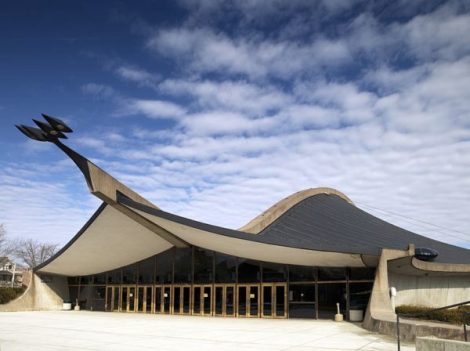
7) Villa Dirickz (Marcel Leborgne, Brussels, Belgium, 1933)
Another seminal building of Modern architecture is Villa Dirickz. It features eye-catching blocky features, glass works, and white concrete surrounded by greenery. The villa, that is $10,000,000-worth, houses lavish interiors as well as facilities like a wine cellar and a cinema.
Marcel Leborgne is a pioneering Belgian architect, and he is the father of Modern architecture in his homeland. The house was designed for Mr.Dirickz, an industrial magnate, who took interest in arts. Many years afterward, the villa fell into the well of neglect till developer Alexander Cambron bought it in 2007. Cambron dedicated all possible resources to renovate the villa.
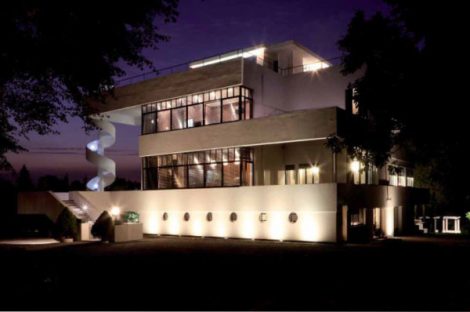
8) Isokon Building in London (Wells Coates, London, UK, 1934)
The residential building, that is still in use up to this day, consists of 32 apartments; 24 of which are studio apartments and 8 are single-bedroom apartments. The building also includes staff rooms and a spacious garage.
The apartments had tiny kitchens because there was a communal kitchen at the disposal of the residents. They could freely use it to prepare food. There were, also, other services like laundry and shoe-shining.
Avanti Architects, who are specialized in revamping Modern architecture, refurbished the building in 2003. The refurbishment resulted in establishing a communal gallery in the garage to tell the people the history of the building. The concrete residential block is listed as a Grade I-building and is one of the key architectural landmarks in the British capital.
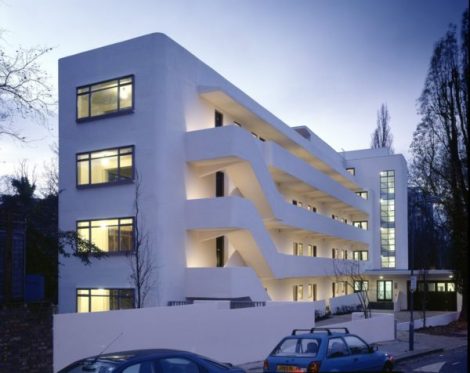
9) Neue National Galerie (Ludwig Van der Rohe, Berlin, Germany, 1968)
Dedicated to modern art, the museum hosts an art collection that dates back to the early years of the 20th century. Its typical modernist design included a great amount of glass, a cantilevered roof, and flat exteriors. The building is surrounded by a sculptured landscape which was also created by Mies Van der Rohe.
The museum is a section of the National Gallery of the Berlin State Museums. The gallery has been closed since 2015 for renovations.
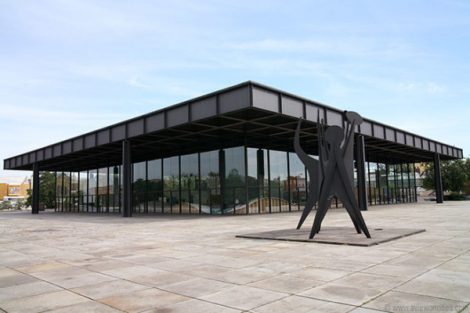
10) The Cité Radieuse (Le Corbusier, Marseille, France, 1952)
This housing project is one of the most important works of Le Corbusier that inspired many other Modern architectural projects. The minimal project was influenced by the Bauhaus choice of colors—yellow, red, and blue. It is composed of 337 flats of 27 different types, in addition to a playground and a pool. The building is made of rough-cast concrete, and the architect planned to also include a steel frame, but to his misfortune, World War II made that kind of material hard to acquire.
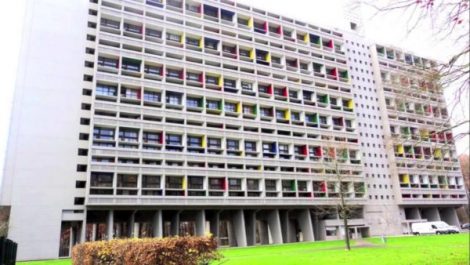

You must be logged in to post a comment Login